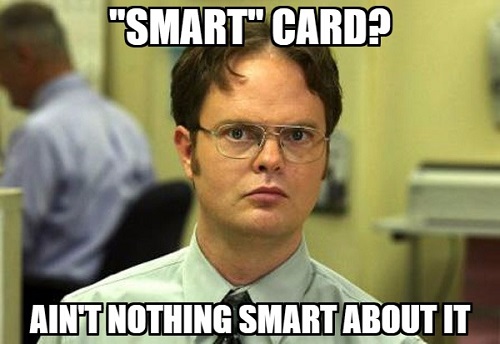Choosing the Right Credit Card for You

Here is a guide to help you understand the many different types of credit cards that are available to us.
There are so many options to choose from and different rules for each.
Carefully research card rates, fees and benefits.
Some cards need to be paid off in full each month and some charge higher interest for carrying a balance but offer great perks for using the service.
Some cards may offer very low introductory APRs (annual percentage rates) but raise the rates substantially after that introductory period has passed.
It is very important that you read all of the fine print before applying for any credit card.

Credit Cards
These accounts have a credit limit and a minimum payment due each month.
The balance that is not paid off at the end of the month is subject to a finance charge.
When the balance is paid off the credit limit becomes available for charging once again.
These accounts can also be used for cash advances which are charged a higher interest rate than purchases.
Examples of credit cards are Visa, Mastercard and Discover cards.
Charge Cards
The balance on these cards must be paid in full each month or finance charges are applied.
Retail or Store Cards
These are credit cards that are issued by retailers for use in their stores.
Store cards typically charge higher interest rates on unpaid balances than other credit cards and they are normally easier to be approved for.
Here’s 3 examples:
Affinity Credit Cards
These cards are sponsored by specific groups or organizations.
The sponsoring organization are normally given a certain percentage of the sales or profits generated by the card.
These cards often have higher interest rates than a regular credit card.
Examples of affinity cards are Rock band or airline sponsored Visa and Mastercards.
Premium Cards
These cards are known as Platinum or Gold Cards and they are generally issued to those with a substantial income and established credit history.
These cards offer higher credit limits but charge higher fees and card holders enjoy perks such as special offers and discounts for services and from retailers.
Co-branded Credit Cards
Credit card companies frequently join with other companies such as airlines to offer Co-branded credit cards.
These cards offer specific reward points for usage which can later be traded for miles to use with the airline that is affiliated with the card.
These cards are extremely popular and are available from a variety of different kinds of companies.

Unsecured Credit Cards
Unsecured credit cards are credit cards issued to people who have fair credit, poor credit, or no credit at all.
These accounts are unsecured and generally have higher APRs (annual percentage rates) than regular credit cards.
These cards are great for rebuilding credit.
If you’re looking to rebuild credit you can take a look at the credit cards we review in our bad credit credit cards section.
Secured Cards
Secured cards are credit cards that are guaranteed by a savings account.
The credit limit is equivalent to the balance in the savings account.
If payments are not made the savings account could used to cover the missed payment.
These cards are easier to get and are frequently used by people who are either trying to establish or reestablish credit.
“Smart” Cards
Smart cards are not really credit cards.
They are cards which contain a microchip which is programmed to contain data.
These cards are loaded by a store or bank and then sold to consumers for retail use.
Smart cards are commonly used for store credit in lieu of cash after merchandise is returned.

Balance Transfer Cards
Balance transfer cards are used to consolidate several credit card balances onto one credit card thus making the total owed easier to pay off.
Customers enjoy lower monthly payments as well as reduced interest rates.
Balance transfer cards are extremely popular and offered by most banks.
You can find many reviews for balance transfer cards in our balance transfer credit cards section.
ATM Cards
ATM cards are not credit cards.
These cards are attached to a checking account and may have a Visa or Mastercard logo on them so that they can be used for purchases in stores.
ATM cards are used to withdraw money from ATM machines.




